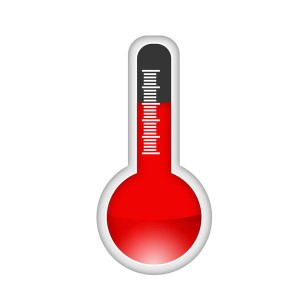 The storage tank water heater is the most common type of water heater found in homes across the country, and has been since the early 20th century when it first entered widespread domestic use. Even with recent developments in water heating technology resulting in the spread of systems like tankless water heaters and heat pump water heaters, the storage water heater remains a dependable way to enjoy a steady supply of heated water throughout a house.
The storage tank water heater is the most common type of water heater found in homes across the country, and has been since the early 20th century when it first entered widespread domestic use. Even with recent developments in water heating technology resulting in the spread of systems like tankless water heaters and heat pump water heaters, the storage water heater remains a dependable way to enjoy a steady supply of heated water throughout a house.
Chances are high that you have a tank water heater serving your family’s needs. If you require service for your water heater, or you’re interested in a replacement system, call on our specialists. We offer quality repairs and other services for tank water heaters in Cincinnati, OH.
Be Careful of Scalding Hazards with Your Tank Water Heater
Now that we’ve done a bit of promotion for the tank water heater, we’re going to change over to a note of caution: the potential of scalding. Even with advances in water heating technology, there are still limits on the precision control of water temperatures inside the water tank. To make a comparison, you can’t use the thermostat on the water heater to control its temperature with the same precision as you use the thermostat on your HVAC system. If you turn up the temperature on the water heater thermostat, you could have scalding hot water come from showerheads and faucets.
Because homeowners often make the assumption that a water heater thermostat works just like a thermostat for the furnace or other comfort system, they push the temperature up past 120°F. But the thermostat setting doesn’t mean the water won’t rise above this temperature. This is where the lack of precision control becomes important. The thermostat’s sensor is usually located near the bottom of the water tank and doesn’t register the hotter water at the top, making it likely for the water temperature to exceed its setting.
For example, a common condition that occurs in a storage tank water heater is thermal stacking, which happens when intermittent use of the water heater over a short period of time creates overheating in the water at the top of the tank. If the thermostat is set at 120°F, thermal stacking can create water at the top of the tank that is hotter than 140°F. And that’s too hot! Someone could turn on the shower and have a blast of scalding water hit them.
To avoid scalding hazards, do not use the thermostat on your water heater as a way to regulate water temperature at point-of-use, i.e. to a specific faucet or showerhead. If you already have water that’s at the right temperature for comfort in your house, keep the thermostat set steady and don’t adjust it higher. Make sure other people in the house understand not to change the water heater thermostat. Also take precautions to check hot water temperature before using it: there is always some potential for scalding to occur without warning. Use common sense and you can avoid significant health hazards.
Ken Neyer Plumbing, Inc. offers plumbing service for homes and businesses throughout the Greater Cincinnati Area.
